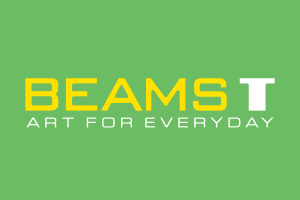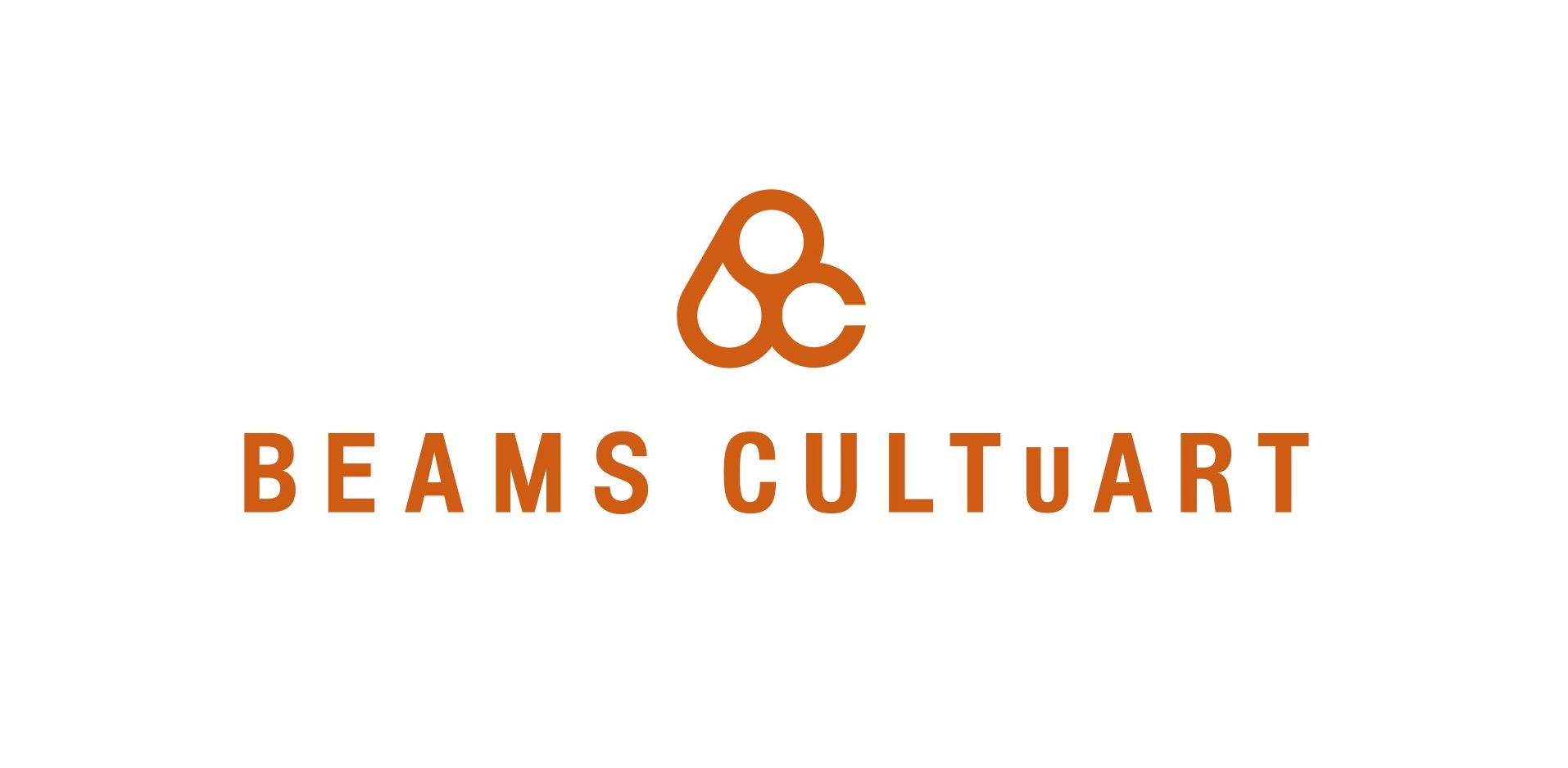

暮らしに馴染む、タグチのスピーカー。
Taguchi's speakers fit in with your life.
〈ビームス レコーズ(BEAMS RECORDS)〉にて、受注生産での販売を行っているスピーカーブランド〈タグチ (Taguchi)〉。1981年に創業した老舗メーカーが始めたコンシューマ向けのブランドには、音質のよさはそのままに、インテリアにスッと馴染むスピーカーが揃っています。実に14年ぶりとなる取り扱いを祝し、昨年末には店頭でポップアップを開催し、実際に体感できる機会をつくりましたが、そのよさをもっと知ってもらいたい。そんな気持ちから「イデー(IDÉE)」ディレクターの大島忠智さんを連れて、工場見学へと出かけました。
Taguchi is a speaker brand that sells made-to-order products at BEAMS RECORDS.
The consumer-oriented brand, started by a well-established manufacturer founded in 1981, offers a range of speakers that fit easily into your interior while maintaining excellent sound quality. To celebrate the first time in 14 years that Beams has carried the brand, we held a pop-up in our stores at the end of last year, creating an opportunity for customers to actually experience the brand. As we want people to know more about its quality, we went on a factory tour with IDÉE director Tadatomo Oshima
PROFILE

大島忠智
(イデー ディレクター)
1998年にインテリアショップ「イデー」へ入社。さまざまな経験を経て、現在はディレクターとして、展示会やイベントの企画・統括、商品の買い付けやセレクト、商品開発など、さまざまな業務に携わる。webマガジン「LIFECYCLING」を立ち上げ、インタビューも行なっている。
Instagram
〈タグチ〉のスピーカーとは。
ー 今日は工場を案内してもらいながら、〈タグチ〉のスピーカーを体験していただこうと思います。大島さんは〈タグチ〉のことをご存知でしたか?
大島:知っていましたよ。以前、「イデー」でも扱っていましたよね?
中島:はい、置いていただいていましたね。発売当時、〈ビームス レコーズ〉さんでも扱っていただいていた『VOICE』というアンプ一体型のスピーカーです。黒崎さん(「イデー」創業者)が池尻大橋で「IID 世田谷ものづくり学校」をやられていた時もお手伝いしたんですよ。

案内してくれたのは、〈タグチ〉を販売する
「タグチ クラフテック」代表の中島 学さん。手に持っているのは、
アイコニックなスピーカー『LIGHT』のエンクロージャー。
大島:飲食店でもよく吊られていましたよね。以前、自由が丘にある「イデーショップ 自由が丘店」の4階にあったカフェでも使っていました。
中島:業務用スピーカーを40年ほど前からつくって来ました。プロオーディオ業界と呼ばれているんですけど、その業界では知名度がありまして。その知見をライフスタイルに合うスピーカーへ落とし込もうと「イデー」さんなどの店舗什器を始め、いまにいたります。
大島:基本的には特注品をオーダーメイドでつくられて来たんですか?
中島:元々はオーダーメイドが多かったですね。劇場のような空間やアーティストの意向に合わせてつくる感じです。
ー 始まりはコンサート用のスピーカーだと伺っています。
中島:そうですね。昔のコンサートはPAと呼ばれる専門の音響会社がなく、舞台屋さんが映画館用のスピーカーなどを使って音響もやっていたのです。ビートルズなどもそうだったそうですが、そうすると歓声の方が上回り、何も聴こえないという事態になって。海外では機材が進化していたのですけど、当時は1ドルが360円の時代で高くて買えない時代でした。そこで日本のいろんな音響屋さんが国内でつくり始めたのですけど、それをつくっていたのが〈タグチ〉なんです。
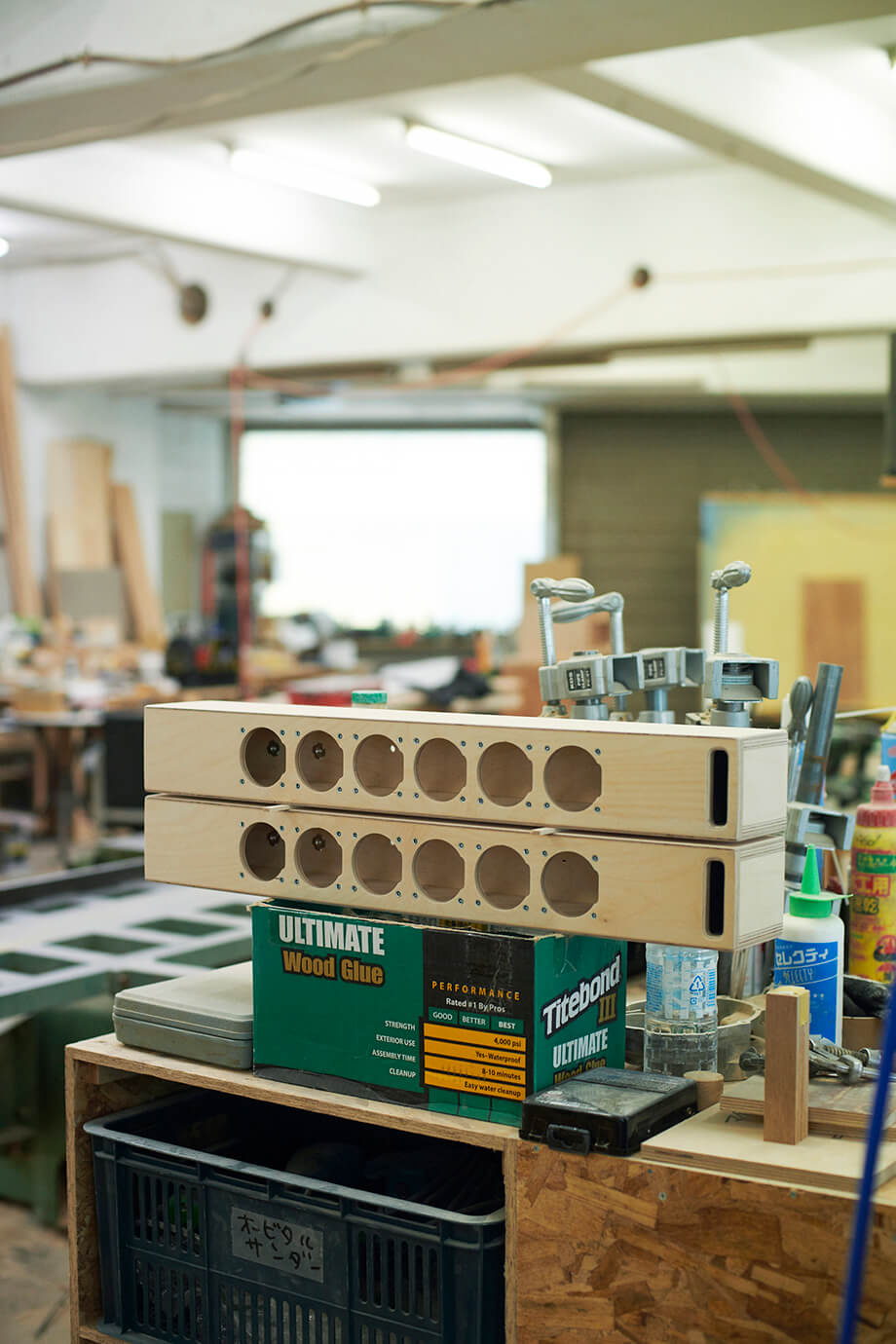


〈タグチ〉では、さまざまなサイズのスピーカーを
一つひとつ手づくりしている。
- スピーカーのエンクロージャー(入れ物部分)には、どのような素材が使われているんですか?
中島:北欧のバーチ合板を使っています。日本で言うところの白樺の一種ですね。南洋材などは成長が早くて5〜6年で木材になるんですけど、北欧は70〜100年くらいかけて育てていくので、木の密度が高いんです。音響特性がよくて、昔から音響用のスピーカーとして使用していました。積層面が細かいのでバームクーヘンみたいに見えるのですが、あえてそれをデザインとして取り入れているものもあります。北欧家具とかでもよく見られますよね。
大島:そうですね、バーチ材の素材感を活かした家具というのは多く、フィンランドのデザイナー、アルヴァ・アアルトの家具は有名です。アアルトのデザインした家具は私自身好きで、自宅でも使用していますし、この間の北欧出張でもヴィンテージのアアルトの家具を買い付けて来ました。
中島:〈タグチ〉では、先駆者的な存在のフィンランドと、ラトビアのバーチを使っています。バーチの産地には、ほかにロシアがあるんですけど、いまは少し難しいところがありますね。
大島:ウッドショックに続いて、いまはすごく大変ですよね。
理想は鳥肌が立つ音。
ー スピーカーにバーチ材を使うのには、どのような理由があるのでしょうか?
中島:素材の密度と硬さですね。特にバッフル面という前面、スピーカーユニットが付く面が一番重要なんですが、全面に使用しています。
大島:他のメーカーでは、別の木材を使われているところもありますよね。それは目指す音の違いなんですか?
中島:あとはやはり、コストの場合もあります。バーチはスピーカー向きの木として知られているんですが、一般的な家電量販店で販売されているものには、安価なMDF材を使うことが多いですね。MDFは木の粉を固めた繊維板で、音は安定するんです。他にはアピトン合板という、硬い木もあります。
大島:基本的には硬質な木がいい音を出すということなんですね。
中島:そして、合板か無垢材かという選択肢もあるんですが、無垢材ですと木によって水分量や乾燥具合が異なりますし、音が安定しないんです。ヴァイオリンなどの楽器は無垢材を使っているので、同じ木材でも音が変わっていきます。〈タグチ〉のスピーカーは工業製品をつくっているようなものなので、一つひとつの音が変わってしまってはいけないんです。物性的に安定した材料ということから、合板を使っています。

中島さんが触れている部分がスピーカーのバッフル面。
- 〈タグチ〉が理想とするのは、どのような音なのでしょうか?
中島:先代の田口(創業者の田口和典)がよく言っていたのは、“鳥肌が立つ音”という表現です。スピーカーをつくる時、通常は測定器で測りながら音をつくっていくんですけども、数値に縛られすぎて、つまらない音になってしまう場合もある。綺麗なデータは取れるんですが、それだけだとどこか面白くないんです。測定器はポイントで使っていますけど、最後は聴感で、聴いた時に鳥肌が立つかどうかが重要だと。あとは、音の気配とか佇まい。そういうものを再現するスピーカーをつくりたいと、先代は常々言っていましたね。
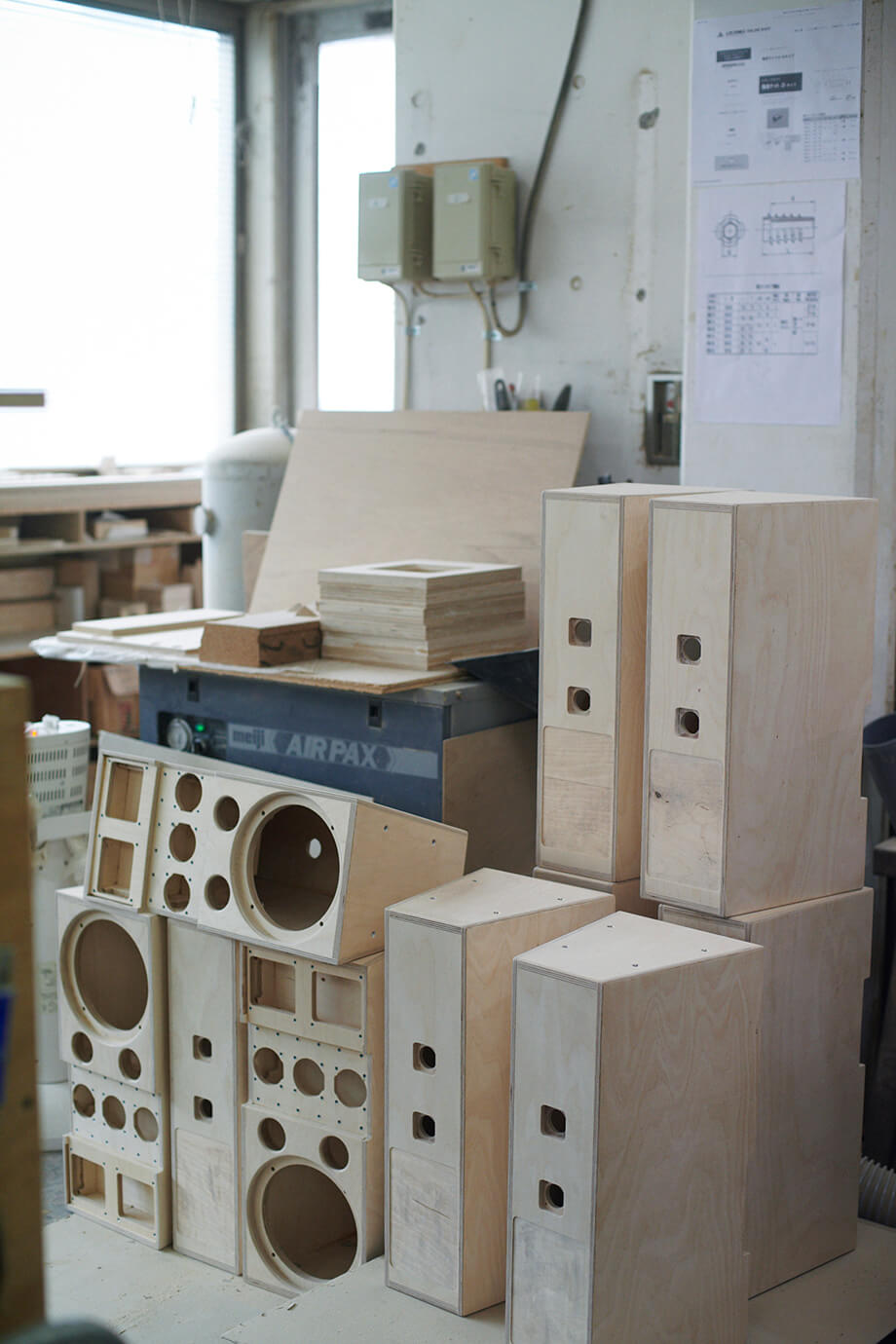
2022年12月に、恵比寿ガーデンプレイスにオープンした
食と音楽が融合したダイニング
「ブルーノート・プレイス(BLUE NOTE PLACE)」のためにつくられた試作品。
- 機械を参考にしながらも、最終的には人に帰ってくると。
中島:そして、オーディオ好きの方々の世界では、ヴィンテージスピーカーが愛されたりするんですが、先代は“骨董品だ”とよく言っていました。言葉は悪いですけど、 古いものはいいものとして理解し、リスペクトしつつも、そこにこだわり過ぎるのも違うのではということでした。“常に新しいものを生み出していきたい”“いろいろなものを脱ぎ捨てて生きていきたい”と言っていましたね。“音の解放”という表現もよくしていました。
大島:先代の言葉、響きますね。
-家具も同じようにヴィンテージの人気がありますよね。
大島:ありますね。同じようにヴィンテージの家具はいいものなんですけど、どうしても数は限られてきますし。また、ライフスタイルも変わってきていて、現代のライフスタイルに合う家具やインテリアも必要だと思います。環境のことも配慮しなくてはいけないし、いまならではのこれからのデザインを考えるのも必要な時代ではありますよね。過去はリスペクトしながらも、前に進んでいくということをしていかないとなと。

大島:気になっていたのですが、このスピーカーはジャズ向き、あれはクラシック向きと、オーディオ好きの方は言ったりしますよね。〈タグチ〉のスピーカーには向いている音楽のジャンルがあったりするのでしょうか?
中島:スピーカーによってのところはありますね。オーディオマニアの方々は、部屋にたくさんスピーカーを置いて、ジャズはこれ、ロックはこれと聞き分けている方もいますね。ちょっと視聴しに行きましょうか。
それぞれのスピーカーの違い。
ー 大島さんに私物のレコードを持ってきていただいたので、まずは〈ビームス レコーズ〉で展開する3型を視聴してもらいましょう。最初は『LIGHT』ですね。
中島:通常のブックシェルフ型のスピーカーは指向性と言うんですけど、『LIGHT』は360度に音が広がる無指向性スピーカーと言います。もともとは、劇場の真ん中に置いて、壁に反射した音の残響率を調べる目的で、測定用に12面体スピーカーをつくったのが始まりです。最大で20面体スピーカーまでつくったことがありますが、『LIGHT』は6面体スピーカーです。
大島:コンサートホールなどでやられていた技術を家庭にと。自分は、そこまでオーディオ機材に詳しいわけではなく、オーディオ機材もインテリアの一部という考え方なんです。もちろん音楽は好きで5000枚くらいレコードは持っているんですけど、シンプルに聴ければいいというタイプでして。自分の自宅でと考えるなら、部屋のインテリアに馴染むかというのも重要です。
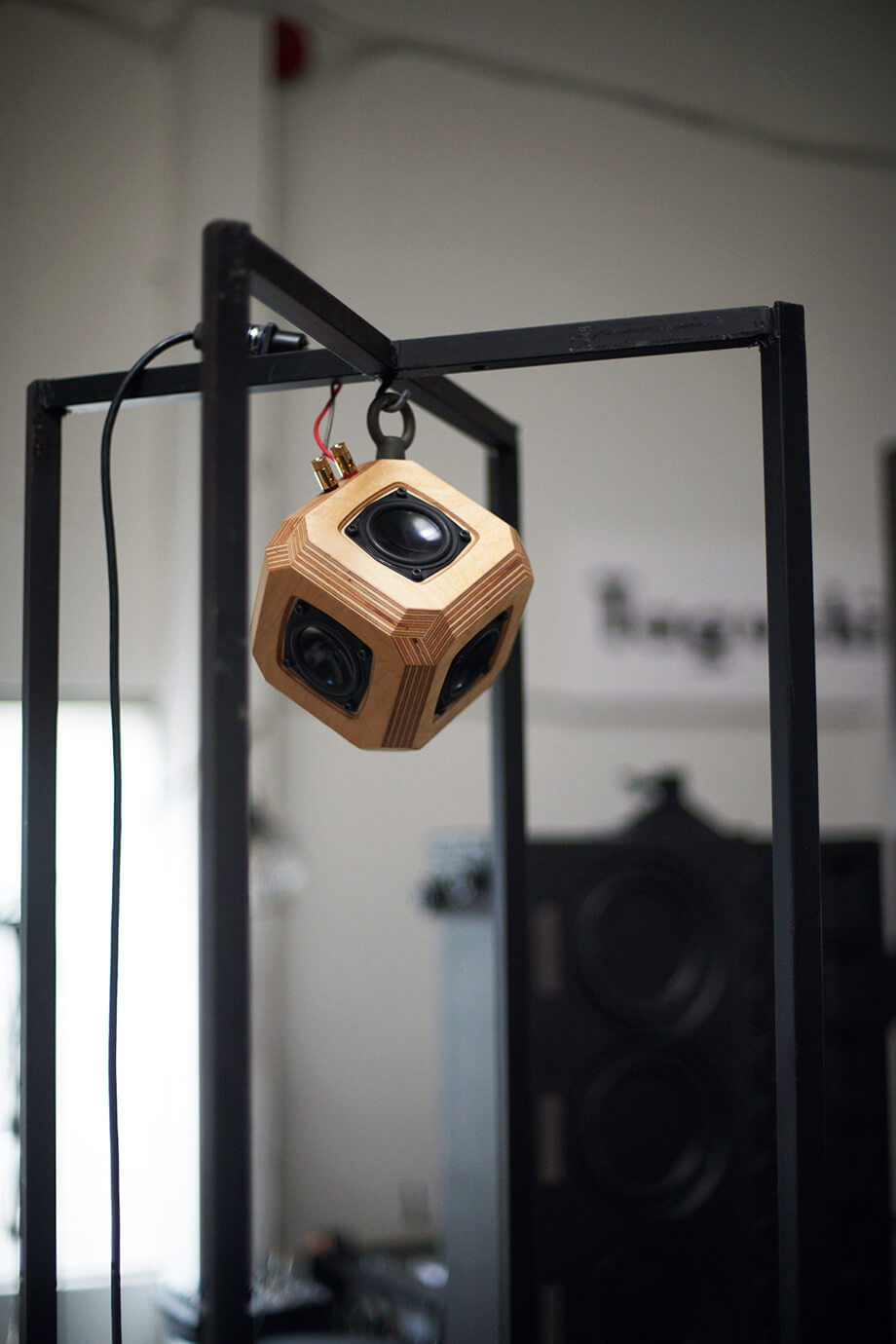
最初に視聴した『LIGHT』のハンギングモデルのステレオ版。
〈ビームス レコーズ〉では、上からかけるハンギングと脚が付いたスタンドの2モデルに、
モノラルとステレオの2種の組み合わせで、計4型の受注をしている。
大島:いまでこそスピーカーの形はいろいろありますけど、「イデー」で取り扱っていた頃は、スピーカーと言えばブックシェルフ型が一般的で、それ以外の形はあまりなかったですからね。しかもそれを自宅でとなると、本当に限られていました。改めて見て思ったのが、音がいいというのもあったと思うんですけど、インテリアの空間に馴染むというのも、黒崎さんは重要視していたのかなと。
中島:あとは、プロオーディオの業務用スピーカーをつくっている会社が、身近なスピーカーをつくっているというストーリーもあったからかもしれないですね。ボーカル系や音数の少ないピアノや弦楽器などの音楽に向いているスピーカーです。
大島:では、まずはこれを聴いてみていいですか?
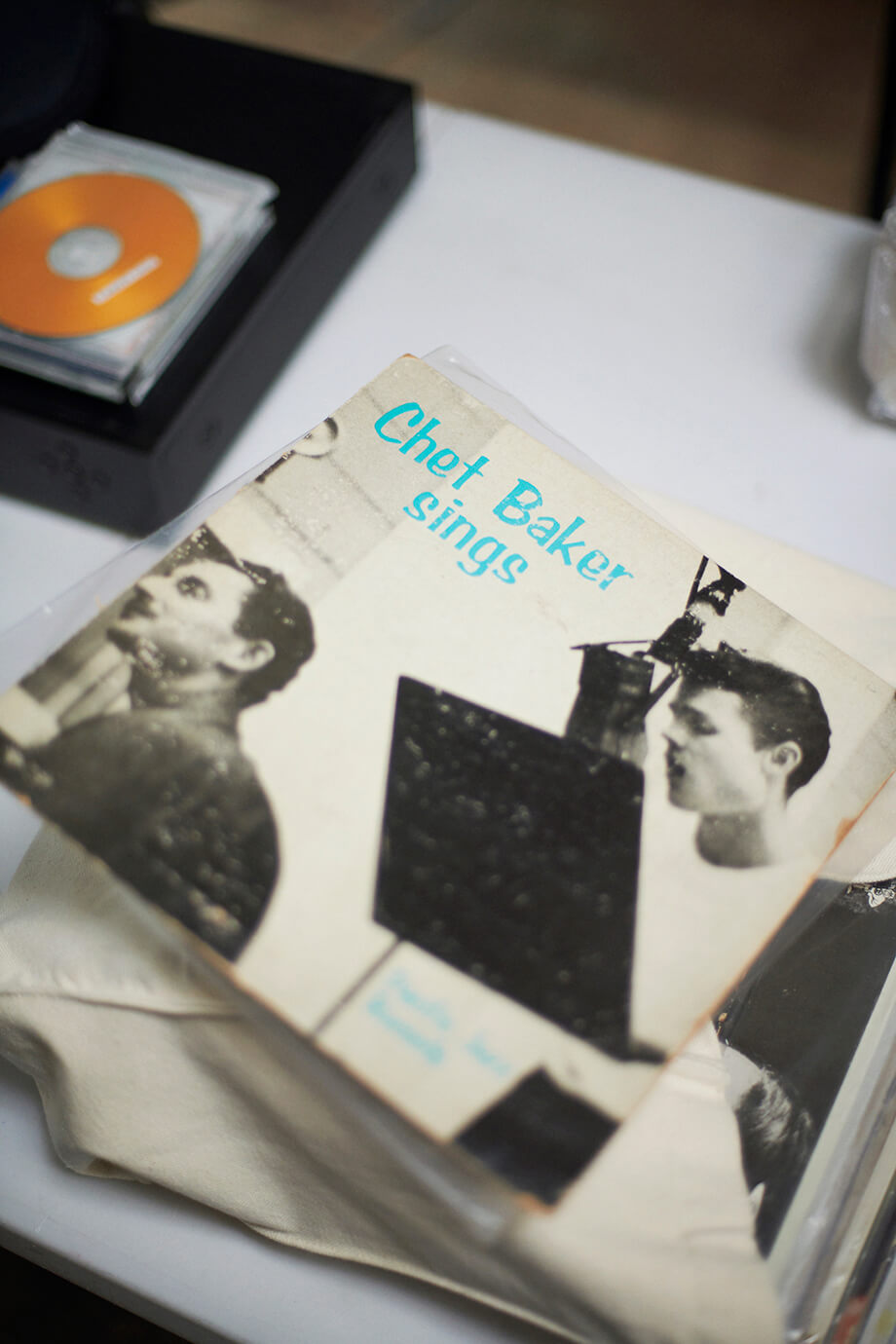
選んだのはチェット・ベイカーの名盤『Chet Baker Sings』。ハイトーンボイスは『LIGHT』との相性もいい。
中島:コンセプトとしては、かしこまって音楽を聴くというよりも、360度に放射線状に広がる音を空間全体で楽しむイメージです。家で生活していると、食事をつくったり、掃除したりと動き回りますよね。ブックシェルフ型のスピーカーはちゃんとステレオ感を味わうには対角線上で聴くのが理想なのですが、家という空間を考えた時に難しいところがあります。それなら全体が音で包まれている方が、ライフスタイルに合っているのじゃないかと。
大島:それはある意味でインテリアと同じような捉え方で、その考え方にも共感します。実際のところ、暮らしの中で真剣に座って聴くという時間はほとんどないと思うんです。家事をしながらとか、本を読みながらという方も多いですよね。
中島:どっしりと腰を据えて音楽を聴けるという環境の方は、いまの時代すごく贅沢ですよね。
大島:それにぼくとしては、何かしながら聴く方が好きというのもあるんです。真剣に向き合って聴いていると少し疲れてくる。そういう人も多いと思います。普段の暮らしの中で、なにげなくかける音がよくなる、というのがいいですよね。
中島:このスピーカーは店舗でもよく採用されています。指向性のある通常のスピーカーを天井に埋め込むお店が多いんですが、そうすると音の広がりが狭いので数箇所に設置する必要があるんです。これは前後・上下・左右の3次元方向に音が放射線状に広がることにより、空間全体に共鳴し、空間的な響きを奏でます。
大島:本当にいろんな方向から鳴っているように感じますね。

大島さんが『LIGHT』を自宅で使うなら、
立方体の特徴的なフォルムを活かして、とことんシンプルでミニマルなスタイリングに。
- 同じ音源で、『LIGHT』と同じく無指向性の『LITTLE BELL』とを聴き比べてみましょう。どのような違いがありますか?
中島:共に360度に音が広がるスピーカーですが、『LIGHT』は放射線状に音が広がるのに対し、『LITTLE BEL』は水平方向に反射音が広がるスピーカーです。上に付いている円錐が反射板の役割をしています。
大島:下から上に音を出して、反射させて360度に音が広がる訳ですね。
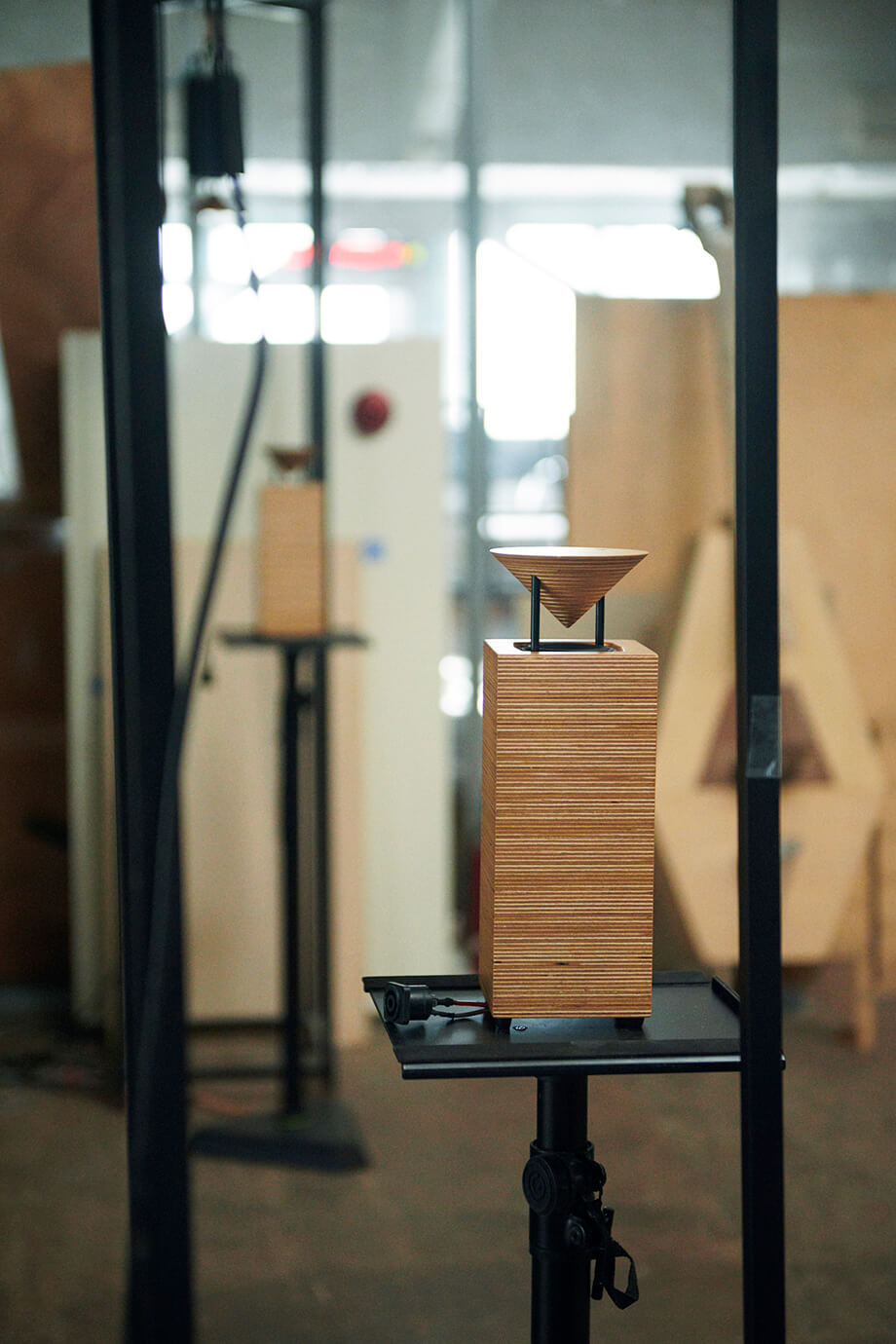
360度に音が漂うように聴こえる『LITTLE BELL』。
『LIGHT』よりも低音の効いた、柔らかい音が特徴。
- 比べてみると、先に聴いた『LIGHT』の方がより高い音域にフォーカスされているような感覚がありますね。
大島:たしかに。聴こえ方も違いますね。
- 横方向に音が広がっていく聴こえ方ですね。アンビエントなどにもハマりそうです。
大島:どこから出ているか分からない感じもありますが、ピアノの音が綺麗で、すぐそこで弾いてるようなライブ感もありますね。
中島:あるピアニストの方に、ピアノ的な音がすると言われたこともあるんですよ。グランドピアノは蓋を開けて反射板として音をコントロールするので、その効果なのではと思っています。
大島:比べるとまろやかな音に感じますね。
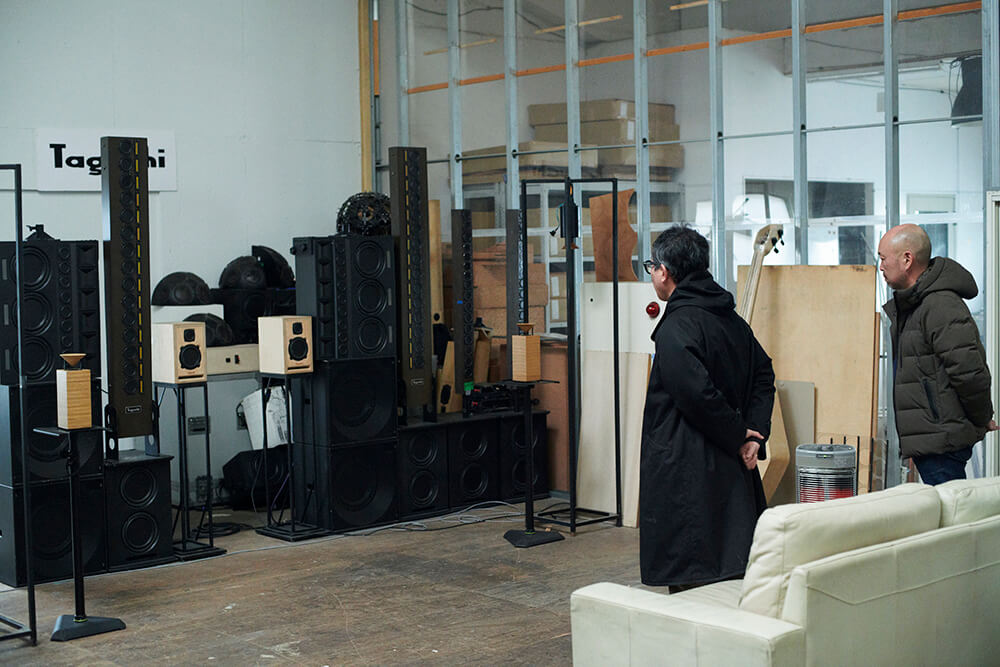
中島:反射音なので直接音と比べて耳障りじゃない、立体的な音がしますよね。
大島:そう、耳障りな感じがしません。ふくよかで丸い感じの音がします。このサイズ感というのもいいですね。
中島:だだっ広い工場なので分かりにくいのですが、ご自宅だと音に包み込まれている感じがより味わえますよ。耳の高さに置くのが理想ですが、床置きも足元から音が漂う感じで面白いです。

大島さんの自宅に設置した『LITTLE BELL』。
エリック・ホグランを始めとした北欧のビンテージ作品など、存在感のあるインテリアとも合う。
- ブックシェルフ型の『F613-B』は、また違った感じになるので変えてみましょうか。
大島:感じ方で言うと、普段聴いている感覚に一番近いですね。
中島:このスピーカーは、〈タグチ〉が力を入れている平面波スピーカーです。通常のスピーカーユニットは円錐コーン型ユニットと言い、振動板が丸くお椀のような形をしていますが、このスピーカーは振動板がフラットな形状です。円錐型の場合は、いろいろな方向に音が出て、干渉し合います。それを平面にすることで、同じ面から同時に同方向へと音が出るので、出音の響きがとても自然です。平面だと素直な波面を出せるので、解像度が高くリアリティのある本来の音を届けられるんです。

フィンランドバーチと平面スピーカーを採用し、
音の表現力に優れている『F613-B』。
- お店などに納品する業務用は平面スピーカーが多いですか?
中島:最近は増えていますね。昔はさまざまなオーディオメーカーがチャレンジしたんですが、技術やコストの問題から、現在ではほとんどのメーカーが辞めてしまいました。その時はオーディオ用の小型スピーカーだったんですが、いまでは技術的な部分も〈タグチ〉では解消していまして、コンサートで使用できる大型スピーカーまで、いろいろなところで使われています。
- 表現力も優れていて、この『F613-B』はどんなジャンルでもしっかりと鳴らしてくれそうですね。
中島:小型サイズながら低域の音も豊かで広帯域再生が可能なスピーカーですね。
大島:では、せっかくなので聴いてみましょうか。

大島:おお、いいですね! たしかに、低音が効いた音楽に最適です。ところで、先ほど教えていただいた平面スピーカー、初めて知りました。
中島:最近はつくっているところも少ないですからね。いまでもオーディオ用の小型平面スピーカーをつくっているところは、小さなところで2〜3社ほどです。
大島:どうして、やらなくなってしまったんですか?
中島:平板の部分に強度を持たせながら軽量化することが難しかったんです。
大島:なるほど。久しくこんな大音量で音楽を聴いていなかったので、興奮してきますね! 自宅で音楽をじっくり聴くとなったら、これが一番かな。
中島:せっかくなので、最後に業務用として使われるような、大きな平面スピーカーも聴いてみてください。
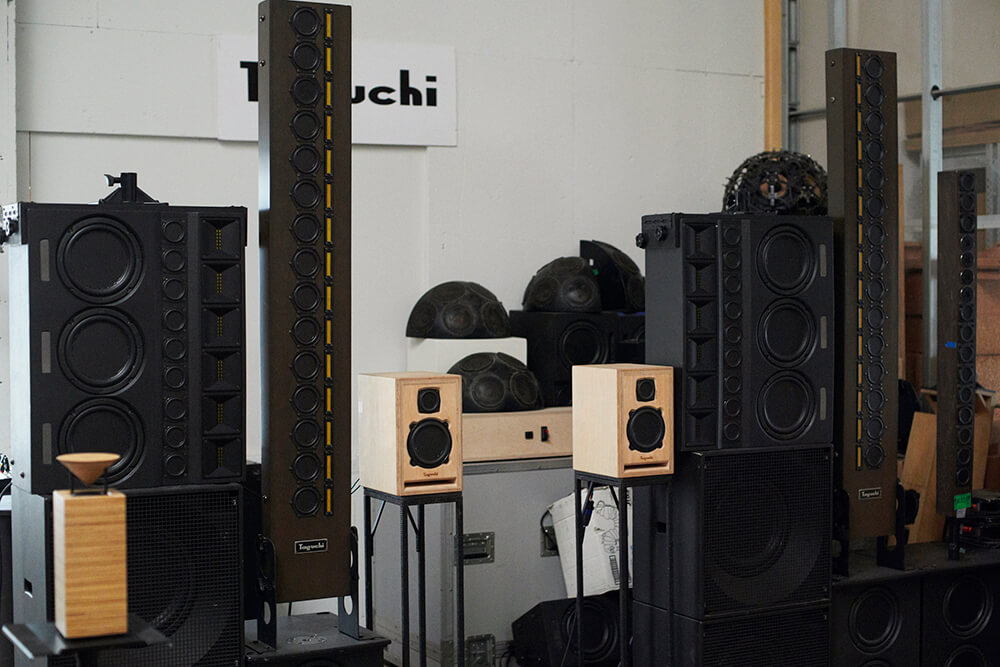

中島:これは、スピーカーユニットを縦に線状に配列し、耳障りな高域音を抑え、耳に優しい音を再生するためにスピーカーユニットが付いているバッフル板を弓状形状にしたアーチドアレイスピーカーです。一般的な点音源スピーカーと比べ、距離減衰率が約半分のため、小さい音量で遠くまで音を届けることができます。音響エネルギーが平均的に分散しているため、近くで聞いてもうるさくなく、そこそこの音量でも会話ができるとよく言われます。
大島:本当ですね。スピーカーから遠く離れても音量が変わらないですし、普通に会話もできます。どのような仕組みなんですか?
中島:一般的なスピーカーは水平方向にも垂直方向にも音が広がりますが、このスピーカーは垂直方向にはあまり広がらず、水平方向にだけ音が広がる特徴があります。それによって何が起こるかというと、垂直方向に広がらないことで、天井や床に音が反射して反響してしまうことがなくなり、狙ったエリアに明瞭な音を届けることができるのです。教会など残響音が多い空間ではすごく効果を発揮しますし、スピーチなんかも聞きやすい。
大島:いい音で楽しいですね! 次はこれも聴いてみていいですか?
…その後も1時間を超える視聴が続き、〈タグチ〉のスピーカーを存分に楽しんだ大島さん。〈タグチ〉の業務用スピーカーは、以下のお店などで使われているので気になる方はそちらを。〈ビームス レコーズ〉店頭では、『LIGHT』のハンギングモデル・ステレオを常設し、『LITTLE BEL』も3月末まで試聴機を設置しています。

〈タグチ〉のラインアレイスピーカーは、表参道にある「TRUNK(HOTEL)」
入り口すぐのラウンジにも数台設置されている。
見た目もスッキリ収まり、内装と調和が取れている。
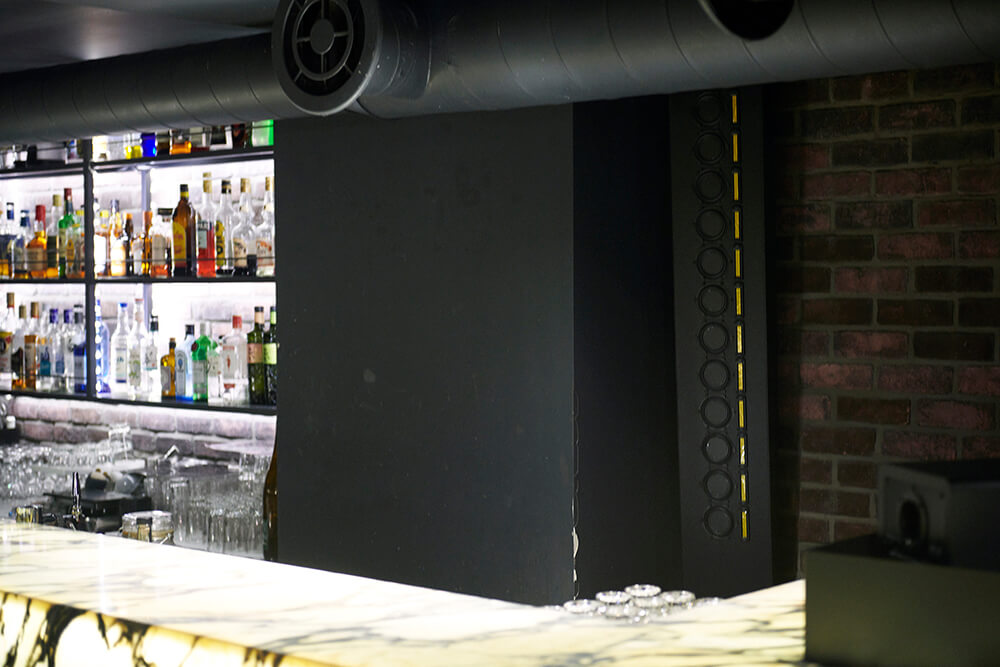
下北沢にある「カウンタークラブ(COUNTER CLUB)」にも、
〈タグチ〉のラインアレイスピーカーが導入されている。
あくまでクラブではなくミュージックバーとして営業しているため、
会話ができるのも大事なんだとか。内装に合わせて、カラーは真っ黒に。
INFORMATION
〈タグチ〉のアイテムは「ビームス レコーズ」店頭、または公式オンラインショップからご覧ください。
PROFILE

Tadatomo Oshima
(Director, IDÉE)
He joined the interior store IDÉE in 1998. After gaining different experiences, he is currently involved in various tasks as a director, including planning and overseeing exhibitions and events, buying and selecting products, and product development. He is also the founder of the web magazine “LIFECYCLING” and conducts interviews.
Instagram
What is a Taguchi speaker?
ー Today, we would like Mr. Nakajima to give us a tour of the factory and have Mr. Oshima experience Taguchi speakers. Did you know about Taguchi before?
Oshima: Yes, I did. We used to carry the products at IDÉE, didn’t we?
Nakajima: Yes, you used to carry our products. It is a speaker with an integrated amplifier called “VOICE,” which was also sold by BEAMS RECORDS at the time of its release. I helped Mr. Kurosaki (founder of IDÉE) when he was running the “IID Setagaya Monozukuri School” in Ikejiri-Ohashi.

Manabu Nakajima, the representative of Taguchi Craftech,
which sells Taguchi products, guided us around.
In his hand is the enclosure of the iconic “LIGHT” speaker.
Oshima: They were often hung in restaurants. We used to use them in the café on the fourth floor of the IDÉE Shop Jiyugaoka.
Nakajima: We have been making speakers for professional use for about 40 years. We are well known in what is called the pro audio industry. We started making store fixtures for IDÉE and other retailers to incorporate our knowledge into speakers that fit their lifestyles, and here we are today.
Oshima: Did you basically make customized products to order?
Nakajima: Originally, we did a lot of custom-made work. We would make them according to the space like a theater or according to the artist’s wishes.
– We heard that you started out making speakers for concerts.
Nakajima: Yes, that’s right. In the old days, there were no specialized sound production companies for concerts (called PA in Japanese), and the stagehands did the sound using speakers for movie theaters. The Beatles’s concert sound, for example, was created in the same way, but then the cheers outweighed the sound, and nothing could be heard. Better equipment had evolved overseas, but at the time, a dollar was 360 yen, and it was too expensive to buy. So, various Japanese sound manufacturers started to make their own equipment domestically, and Taguchi was one of them.



Taguchi handcrafts speakers of
various sizes one by one.
- What kind of material is used for the speaker enclosure?
Nakajima: We use Scandinavian birch plywood. It is called “Shirakaba” in Japanese. South-sea lumber grows quickly and becomes lumber in 5 to 6 years, but Scandinavian lumber takes about 70 to 100 years to grow, so the density of the wood is high. It has good acoustic properties and has been used for acoustic speakers for a long time. The laminated surface is so fine that it looks like a baumkuchen, but some dare to incorporate it into their designs. You often see this in Scandinavian furniture.
Oshima: Yes, there is a lot of furniture that takes advantage of the birch wood’s materiality, and the Finnish designer Alvar Aalto’s furniture is famous for it. I like Aalto’s furniture myself and use it in my home, and I bought some vintage Aalto furniture on a recent business trip to Scandinavia.
Nakajima: At Taguchi, we use Finnish birch, which is a pioneer in the field, and Latvian birch. There are other birch-producing countries, such as Russia, but it is a bit difficult to use Russian nowadays.
Oshima: Following the lumber shortage, things are very difficult now, aren’t they?
Ideal sound is what would give you goosebumps.
ー What are the reasons for using birch wood for speakers?
Nakajima: The density and hardness of the material. In particular, the baffle surface, the front surface where the speaker units are attached, is the most important, and we use it on all surfaces.
Oshima: Some other manufacturers use different woods. Is that a difference in the sound you are aiming for?
Nakajima: After all, it is also a case of cost. Birch is known as a good wood for speakers, but those sold in general electronics stores often use inexpensive MDF wood. MDF is a fiberboard made of hardened wood powder, and it stabilizes the sound. Another type is apitong plywood, which is a hardwood.
Oshima: So basically you are saying that hard wood produces better sound.
Nakajima: And then there is the option of plywood or solid wood, but with solid wood, the moisture content and dryness varies from tree to tree, and the sound is not stable. Violins and other musical instruments are made of solid wood, so even the same wood will have a different sound. Taguchi’s speakers are like industrial products, so the sound of each piece must not change. We use plywood because it is a material with stable physical properties.

The area that Mr. Nakajima is touching is the baffle surface of the speaker.
- What kind of sound is ideal for Taguchi?
Nakajima: My predecessor, Taguchi (founder Kazunori Taguchi), used to say that the ideal sound is what would give you goosebumps. When making speakers, we usually make the sound while measuring with a measuring instrument, but sometimes we are too bound by the numbers and end up with a boring sound. We can get beautiful data, but if that is all we get, it is somewhat dull. We use measuring instruments at points, but at the end of the day, it’s all about the auditory sensation, whether or not you get goosebumps when you hear it. The other thing is the presence or appearance of the sound. Taguchi always said that he wanted to create speakers that reproduce such things.

A prototype created for BLUE NOTE PLACE,
a dining venue combining food and music that
opened at Yebisu Garden Place in December 2022.
- What you mean is that while you refer to machines, in the end it comes back to people.
Nakajima: And in the world of audiophiles, vintage speakers are often loved, but Taguchi used to say that they were “museum pieces”. Forgive him for saying this, but while he understood and respected old things as good, He also thought that it was not right to be too particular about them. He said that he always wanted to create something new, and that he wanted to strip off a lot of things and live. He often used the expression “liberation of sound”.
Oshima: Your predecessor’s words resonate with me.
– Speaking of vintage, old furniture is popular in the same way.
Oshima: Yes, it is. Vintage furniture is good, but there is a limit to the number of old pieces. Also, lifestyles are changing, and I think we also need furniture and interior design that fits the modern lifestyle. We also have to consider the environment, and it is necessary to think about future designs that are unique to the present. We need to move forward while respecting the past.

Oshima: I was wondering, audiophiles often say that this speaker is for jazz and that one is for classical music. Are there certain genres of music that Taguchi speakers are suited to?
Nakajima: It depends on the speaker. Some audiophiles have a lot of speakers in their rooms and listen to jazz this way, rock that way, and so on. Shall we go and have a listen?
Differences between each speaker.
– Since Mr.Oshima brought his personal records with him, let’s start by having him listen to the three models offered at BEAMS RECORDS. The first one is LIGHT.
Nakajima: Ordinary bookshelf speakers are called directional, but LIGHT is an omni-directional speaker that spreads sound in 360 degrees. Originally, we made a dodecahedron speaker to measure the reverberation rate of sound reflected off the walls by placing it in the middle of a theater. We have made up to 20-plane speakers, but LIGHT is a 6-plane speaker.
Oshima: You brought the technology that was used in concert halls and such into the home. I am not that much of an expert in audio equipment, and I think of audio equipment as part of the interior design. Of course, I like music and have about 5,000 records, but I am the type of person who simply likes to listen to music. If I am thinking of using it at home, it is also important that it fits in with the interior design of the room.

Stereo version of the hanging model of LIGHT first viewed. BEAMS RECORDS
is now taking orders for a total of four models: two models,
a hanging model that hangs from above and a stand with legs,
in mono and stereo combinations.
Oshima: Nowadays there are many different types of speakers, but when we were selling them at IDÉE, bookshelf speakers were the most common type of speaker, and there were not many other types. And when it came to home use, it was really limited. Looking at them again, I thought that good sound was one thing, but I also wondered if Mr. Kurosaki also considered it important that they fit in with the interior space.
Nakajima: Another reason may have been the story of a company that makes professional speakers for pro-audio applications making speakers for everyday use. These speakers are suited for vocal music, piano, stringed instruments, and other low-note music.
Oshima: Well, can I try listening to these first?

Chet Baker’s classic album “Chet Baker Sings” was chosen. His high tone voice goes well with LIGHT.
Nakajima: The concept is not to listen to music in a formal manner, but rather to enjoy the sound radiating 360 degrees throughout the space. When you live at home, you move around a lot, cooking meals, cleaning, and so on. Ideally, bookshelf speakers should be placed diagonally in order to get a proper stereo experience, but this is difficult when considering the space of a house. If that is the case, I think it would be more suitable for your lifestyle if the entire space is enveloped in sound.
Oshima: In a sense, that is the same way to look at interior design, and I share that view. In fact, I don’t think we have much time in our daily lives to sit and listen to music seriously. Many people do it while doing housework or reading a book.
Nakashima: Today’s people who are able to listen to music in a relaxed and comfortable environment are in a very luxurious position.
Oshima: I also prefer to listen to music while doing something. I get a little tired when I listen to music seriously. I think there are many people like that. It would be nice to improve the sound that we play casually in our daily lives.
Nakajima: These speakers are often used in stores. Many stores have normal directional speakers embedded in the ceiling, but this way the sound has a narrower spread, so they need to be placed in several places. These speakers radiate sound in a three-dimensional direction (front-to-back, up-and-down, left-to-right), which resonates throughout the space and produces a spatial resonance.
Oshima: It really feels as if the sound is coming from many different directions.

If Mr. Oshima were to use LIGHT at home, he would take advantage of
its distinctive cubic form to create a very simple and minimalist styling.
- Let’s compare LIGHT with LITTLE BELL, which is also omni-directional, using the same sound source. What are the differences?
Nakajima: Both speakers have a 360-degree sound spread, but LIGHT spreads sound radially, while LITTLE BELL spreads reflected sound horizontally. The cone on top acts as a reflector.
Oshima: So the sound is emitted from the bottom to the top, and then reflected back, spreading the sound 360 degrees.

LITTLE BELL sounds like sound drifting in 360 degrees.
It is characterized by a softer sound with more bass than “LIGHT”.
- When we compare the two, we get the sense that LIGHT, which we listened to earlier, is more focused on the higher frequencies.
Oshima: Indeed. The way you hear it is also different.
- The sound spreads horizontally. It seems to be suitable for ambient music.
Oshima: There is a sense of not knowing where the sound is coming from, but the piano sounds beautiful, and it has a live feel as if it is being played right there.
Nakajima: I was once told by a pianist that it has a piano-esque sound. A grand piano has a lid that opens to control the sound as a reflector, so I think this may be the effect of that.
Oshima: It seems to have a mellower sound in comparison.

Nakajima: Since it is a reflected sound, it is less jarring than direct sound, and has a three-dimensional sound, doesn’t it?
Oshima: Yes, it is not jarring. The sound is full and round. The size is also good.
Nakajima: It’s hard to tell since the factory is so spacious, but at home, you can enjoy the feeling of being enveloped by the sound even more. Ideally, the speakers should be placed at ear level, but it is also interesting to place them on the floor so that the sound drifts out from under your feet.

LITTLE BELL installed in Mr. Oshima’s home.
It goes well with the interior with a strong presence, such as vintage Scandinavian works by Eric Hoglan and others.
- Shall we change the bookshelf type F613-B as it has a different feel?
Oshima: In terms of feeling, it is closest to the way I usually listen to music.
Nakajima: These speakers are plane wave speakers, which Taguchi has been putting a lot of effort into. The usual speaker unit is a conical cone unit, in which the diaphragm is round and shaped like a bowl, but this speaker has a flat diaphragm. In the case of the conical type, sound is emitted in various directions and interferes with each other. By making it flat, sound is emitted from the same surface in the same direction at the same time, so the output sound is very natural. The flat surface allows for the production of straight wavefronts, so the true sound with high resolution and reality can be delivered.

F613-B has excellent sound expression
with Finnish birch and flat speakers.
– Are the speakers for professional use that you deliver to stores mostly flat speakers?
Nakajima: Recently, there has been an increase. In the past, various audio manufacturers took up the challenge, but due to technical and cost issues, most of them have quit now. At that time, they were small speakers for audio, but now the technical aspects have been resolved at Taguchi, and they are used in various places, even large speakers that can be used for concerts.
– With excellent expressiveness, this F613-B seems to be able to sound solid in any genre.
Nakajima: Despite its small size, this speaker has a rich low-frequency sound and wide bandwidth reproduction.
Oshima: Now that we’ve got that out of the way, let’s have a listen.

Oshima: Oh, that’s nice! Indeed, it is perfect for bass-heavy music. By the way, I had never heard of flat speakers before.
Nakajima:Nowadays, there are only a few places that make them. Even now, there are only two or three small companies that make small flat speakers for audio equipment.
Oshima: Why did they stop making them?
Nakajima: It was difficult to make the flat part strong and lightweight.
Oshima: I see. I haven’t listened to music this loud in a long time, so this is exciting! I think this is the best way to listen to music at home.
Nakajima: Since you’re here, please take a listen to the large flat speakers that are used for professional purposes.


Nakajima: This is an arched-array speaker in which the speaker units are arranged vertically in a linear pattern, and the baffle plate with the speaker units is shaped like a bow in order to suppress the grating high frequency sound and reproduce a sound that is gentle to the ear. Compared to typical point source speakers, the distance attenuation rate is about half, so sound can be delivered farther at a lower volume. Because the acoustic energy is distributed on average, it is not noisy when heard up close, and it is often said that it is possible to have a conversation even at that loud a volume.
Oshima: True. The volume does not change even if you are far away from the speakers, and you can have a normal conversation. How does it work?
Nakajima: Ordinary speakers spread sound both horizontally and vertically, but these speakers have the characteristic of spreading sound only horizontally, not so much vertically. What happens is that the lack of vertical spread prevents the sound from reflecting and reverberating off the ceiling or floor, allowing the sound to be delivered clearly to the targeted area. It works very well in spaces with a lot of reverberation, such as churches, and it also makes it easy to hear speech.
Oshima: Sounds great and fun! Can I listen to this one next?
…Mr. Oshima continued to listen to the Taguchi speakers for over an hour, enjoying them to the fullest. Taguchi’s professional-use speakers are used in the following stores and other places, if you are interested. Beams Records has a permanent installation of LIGHT hanging model stereos, and LITTLE BELL is also installed for trial listening until the end of March.

Several of Taguchi’s line array speakers are installed in the lounge just outside the entrance to TRUNK (HOTEL) in Omotesando.
They look neatly installed and harmonize well with the interior design.

Taguchi’s line array speakers are also installed at the Counter Club in Shimokitazawa.
Since it is not a club, but a music bar, it is important to be able to have conversations.
The color is pure black to match the interior.


